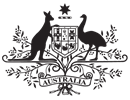SENATOR THE HON JOE LUDWIG
Minister for Agriculture, Fisheries and Forestry
THE HON MARK DREYFUS QC MP
Cabinet Secretary
Parliamentary Secretary for Climate Change and Energy Efficiency
MEDIA RELEASE
Methane emissions stand to boost farmers’ income
The Australian Government today launched the first methodology to be approved under the Carbon Farming Initiative, which will provide pig farmers with the opportunity to earn carbon credits for reducing methane emissions from manure.
Visiting the Grantham Piggery west of Brisbane, Minister for Agriculture, Senator Joe Ludwig, and Parliamentary Secretary for Climate Change and Energy Efficiency, Mark Dreyfus, said over 680 commercial piggery operations in Australia stood to benefit from the CFI.
This is one of many ways Australian farmers will soon be able to benefit from the Carbon Farming Initiative, Minister Ludwig said.
Under the Methodology for the Destruction of Methane Generated from Manure in Piggeries, farmers capture harmful methane emissions produced by manure and destroy the gas by flaring to prevent it entering the atmosphere or alternatively use the methane to generate heat and electricity, , Minister Ludwig said.
Farmers can trade the offsets they generate for carbon credits, which they can then sell to generate income.
The roll out of methodologies such as this will see farmers across the country participating in the worlds first federally backed carbon offset market for the land sector.
This will put Australian farmers at the forefront of emission reduction practices and provide valuable opportunities for farmers to trade carbon offsets internationally.
The methodology was developed in collaboration with the Australian Government, the pork industry and scientists, and assessed by the independent Domestic Offsets Integrity Committee.
The Carbon Farming Initiative is a win-win for farmers because they can generate extra revenue while reducing their carbon emissions, Mr Dreyfus said.
The Australian pork industry suggests that by using the methodology, producers could increase the return on each finished carcass by around $3.45 and preliminary trials suggest the payback period for this infrastructure ranges from 18 months to five years in smaller operations.
Australian Pork Limited CEO Andrew Spencer said this is an exciting initiative for the Australian pork industry.
To be the first industry to have a methodology for the reduction in green house gas production given the green light by the Federal Government displays our willingness and capability to change our practices for the future good, he said.
Consumers can actually see that Australian pork farmers are literally walking the talk in taking the reduction of carbon pollution seriously.
Not only does this show we are environmentally responsible, it also makes our pork different from our competitors overseas. This CFI methodology milestone demonstrates we are listening to what our consumers are saying.
Farmers can start planning projects based on the methodology now and apply to participate in the Carbon Farming Initiative when it begins operating in December this year.
The cost of installing basic methane capture infrastructure is likely to range from around $75,000 to $200,000 depending on the size of the piggery.
This is the first of a range of methodologies that will be available for the Australian agriculture industries.
Other methodologies currently under consideration by the Domestic Offsets Integrity Committee include methodologies to reduce emissions from savanna burning, landfill gas, and waste diversion as well as a methodology to sequester carbon through environmental plantings.
To further help farmers to reduce emissions and be rewarded under the CFI, the government has established the Carbon Farming Futures initiative, which is being designed to lead to the development of more approved offsets methodologies so farmers can receive credits for a broader range of activities.
For further information on the CFI, please visit www.climatechange.gov.au/cfi
THURSDAY, 10 NOVEMBER 2011



